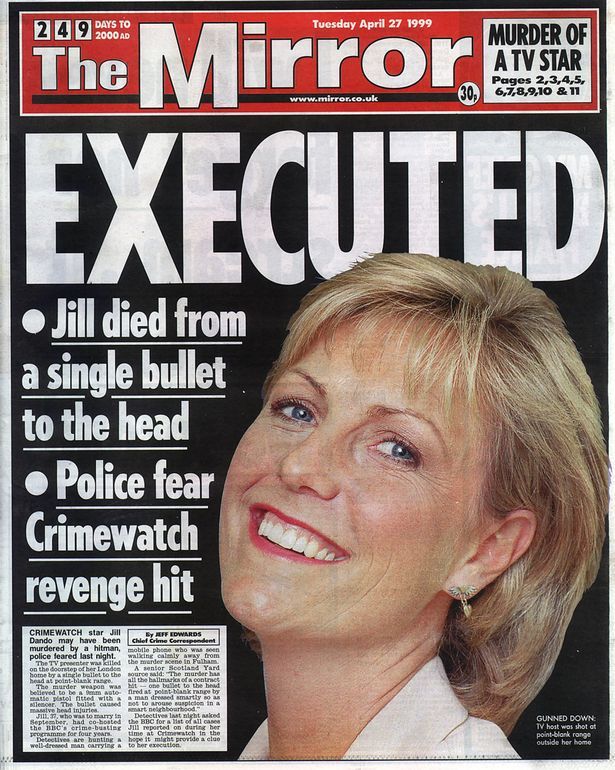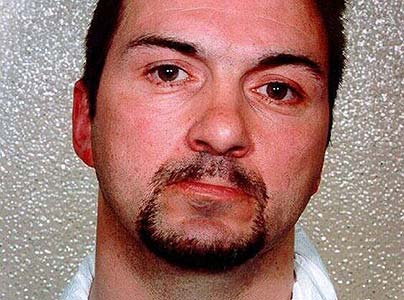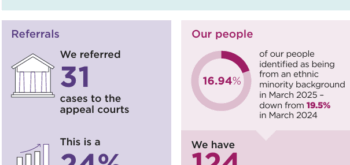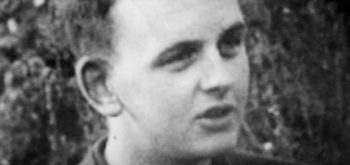Twenty years ago, Jill Dando was one of the BBC’s most popular television presenters. She was a trusted journalist and the BBC’s sweetheart, chosen to present its most popular television programmes. When people turned on their televisions she would be there; her image and voice were a part of the fabric of the nation’s most famous public broadcasting service.
In 1999, on the morning of the 26th April, as she returned home to Gowan Avenue in West London, she was murdered. The expert evidence provides a terrifying image of her last moments. The killer forced her head either onto or close to the front step of her home, then bending or crouching over her he pressed a gun to her head and shot her. It was an execution. It was violence aimed at a woman and one of the most famous women in Britain at the time.
As he fled, the killer was seen and described as a male with dark hair. But after that, he was lost. Very quickly the view taken by the police was that it was most likely the work of either a professional hitman or a stalker. Her work as a presenter of Crimewatch, the BBC programme which reconstructed crimes and then asked the public for help to solve them, along with her recent charity appeal for Kosovan refugees were thought to have made her a possible target. The idea, to those close to her, that the killer was someone who knew her seemed incredible as she was a person incapable of making enemies.
 The media and public scrutiny was immediate and intense, pictures of the road where she lived, populated with murder squad officers were shown on the television news channels. A surreal experience as she’d presented the BBC news. The shock and distress from journalists that one of their own had been murdered was obvious. The public, so familiar with who Jill Dando was, too felt the loss. It was a strange murder and the police were coming under increased pressure to solve it. But there was no trace of the killer who simply vanished into the streets of London, on a busy Monday morning.
The media and public scrutiny was immediate and intense, pictures of the road where she lived, populated with murder squad officers were shown on the television news channels. A surreal experience as she’d presented the BBC news. The shock and distress from journalists that one of their own had been murdered was obvious. The public, so familiar with who Jill Dando was, too felt the loss. It was a strange murder and the police were coming under increased pressure to solve it. But there was no trace of the killer who simply vanished into the streets of London, on a busy Monday morning.
Obsessive fan
The costs of the police investigation rose beyond a million pounds in just sixmonths. The police focus shifted and they believed the likely killer was someone who knew her privately or was a stalker. As the months ticked by the focus narrowed again to that of an obsessive member of the public as the only possible explanation. But as the millennium approached there was still no breakthrough. The police continued to search and sift through information and on the April 17th2000, nearly a year since the killing, they searched the flat of local man, Barry George. His name was on a list of those known to police and his odd behaviour fitted their theory this was the work of an obsessive fan. During the search a coat hanging on his kitchen door was removed and forensically examined.
 Only one bullet had been discharged by the killer and the cartridge case was found at the scene. When Barry George’s coat was examined by the Forensic Science Service, a single particle of firearms residue was found in the coat pocket. It was no bigger than one hundredth of a millimetre but the finding by the senior forensic officer, Mr Keeley, was that it matched the constituent elements of the discharge residue found at the scene of the killing. In May 2001, police charged Barry George with Jill Dando’s murder.
Only one bullet had been discharged by the killer and the cartridge case was found at the scene. When Barry George’s coat was examined by the Forensic Science Service, a single particle of firearms residue was found in the coat pocket. It was no bigger than one hundredth of a millimetre but the finding by the senior forensic officer, Mr Keeley, was that it matched the constituent elements of the discharge residue found at the scene of the killing. In May 2001, police charged Barry George with Jill Dando’s murder.
The prosecution that followed was based on four key areas. First, that Barry George fitted the general description of the man who had been seen fleeing Jill Dando’s doorstep. Second, although not positively identified by those witnesses who had seen the killer, he had been identified as having been in the road four hours before the murder. Third, when interviewed he’d lied about his knowledge of Jill Dando. It was alleged he’d tried to create a fake alibi for the time of the murder and, finally, there was the similarity of the firearms residue found at the scene and the particle found in his coat pocket one year later.
At trial, the opening speech of the prosecution made it clear they relied on the single particle of firearms residue as one of the factors that pointed to his guilt. It was in a coat found at Barry George’s flat and he had accepted in police interview he might have been wearing it on the day of the killing. The expert who had found the particle gave evidence over a number of days. The focus of his evidence was mainly the possibility that innocent contamination could have caused the particle to be there.
A defence expert, Dr Lloyd, gave evidence and his opinion was the particle was so small, that to rely on it one year after the killing, was incredible. Its size cast doubt on where it came from and it could be the result of casual contamination. Before the jury retired, the judge summed up the evidence that had been put before them and he reiterated that if innocent contamination of the coat was discounted by them, the particle’s existence supported the case that Barry George had fired the shot.
The jury took nearly five days to reach their verdict, when they did it was not unanimous, but it was guilty. His legal team appealed the conviction and asked the Court of Appeal to examine many aspects of the case including the single particle of firearms residue and whether it was capable of providing supportive evidence. The conclusion was that the conviction was safe and Barry George remained serving a life sentence.
The trial was reported at length, in particular the evidence of Mr Keeley. A colleague of his, Dr Evett, was concerned at what he read in the newspapers because his understanding of the firearms residue particle had been that it was evidentially neutral. Unbeknown to the defence team, Dr Evett discussed this with Mr Keeley who agreed that his colleague’s understanding was correct.
For the scientists, the discovery of one particle of firearms residue was termed neutral because it meant that it was no more likely to have come from the gun that killed Jill Dando than from any other source. Dr Evett considered the matter further and decided in the end to take no action. He concluded the presentation of the evidence had been confusing but he thought the jury should have gained the right impression, after all the defence had called an expert who had helped explain it.
Barry George had support and his case was referred to the Criminal Case Review Commission who investigated it. In 2006 the Forensic Science Services introduced guidelines about conclusions that could be drawn from single particle firearms residue. The guidance was lengthy but the conclusion clear: a cautious approach was to be adopted with low levels of residue and it was unlikely any evidential weight could be attached to it. It was not possible to say when or how single particles were deposited, if they were the last remains of some prior association with firearms, or whether they have been deposited quite recently from some light contaminated source.
The CCRC commissioned a new report from the Forensic Science Services. It concluded the particle of firearms residue found in the inside pocket of Barry George’s coat was indistinguishable from the residue produced by the round of ammunition used to kill Jill Dando but a high proportion of ammunition could produce such particles. It would be just as likely that a single particle would have been recovered from the pocket of Mr George’s coat whether or not he was the person who shot her a year previously. This was far from how the evidence had been presented before the jury in 2001 and so the CCRC used their powers to refer the case once more to the Court of Appeal.
Nearly everyone had been misled about the strength of the firearms residue evidence. Even during the appeal, the prosecution were reluctant to accept they had in anyway misled the jury but the Court of Appeal concluded it was impossible to know the verdict the jury would have returned had they been given the correct impression. The verdict was unsafe but there had been other evidence relied on and it was to be seen if a jury could be sure, as the Crown were, of Barry George’s guilt. A retrial followed that year and the jury acquitted him. He was released after eight years in prison.
Jill Dando’s killer has not been brought to justice. Barry George was refused compensation for the time he spent in custody as the law requires those who seek compensation for miscarriages of justice to prove they are innocent of the crime. This is the line between what is a miscarriage of justice and an unsafe conviction.
Someone bright and beautiful was horrifically murdered. The pressure and determination to find the killer made the criminal justice system reckless. The smallest of evidence took on too great a significance and those tasked with finding the killer ended up seeing what they wanted to in it. Logic became obscured. How do we stop the humans who are tasked with achieving justice buckling under the pressure? And how do we ensure that if they do, those who are tasked with being the checks and balances in the criminal justice system will act swiftly to correct them?
When someone is murdered it seems they often become defined by their killing. Their killer’s story becomes embedded in theirs. It’s another injustice. It’s why the stalker theory was an appealing resolution to the mystery. Throughout the two trials, Jill Dando was referred to as a well-known television presenter but that could not truly sum up who she was. She was a highly successful journalist, articulate, hugely liked and admired by the British public and most importantly loved by her family and friends. People would turn on their televisions and she would be in their homes. She provided the authority of the news, the comfort of day dreaming of holidays in the sun and she delivered the message of Crimewatch with such reassurance that instead of hiding under your bed when you went to sleep, you felt safe.







